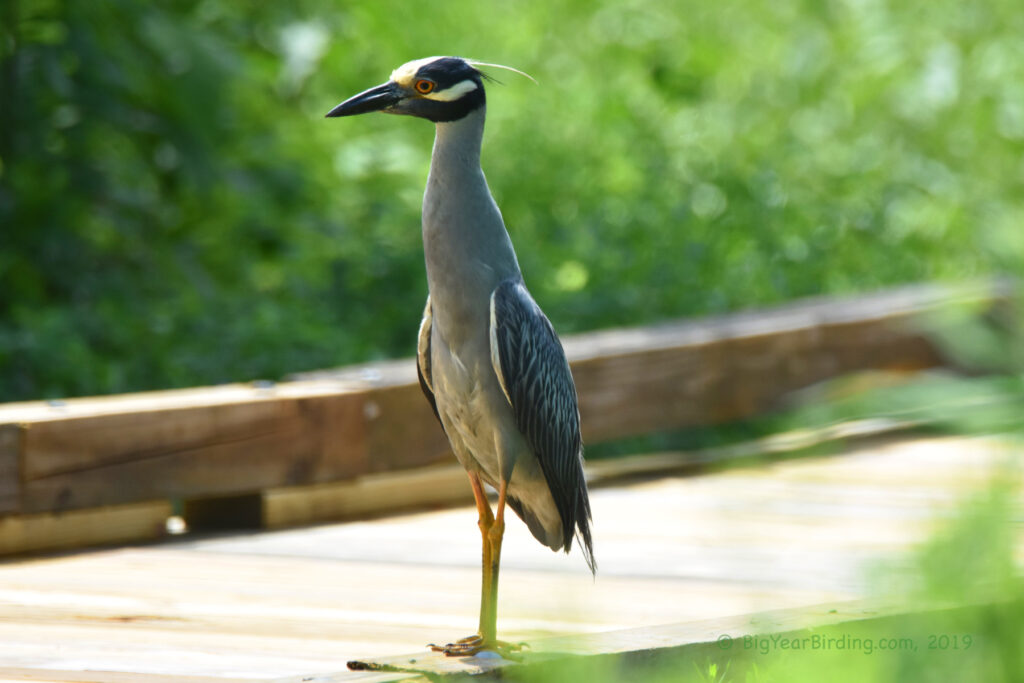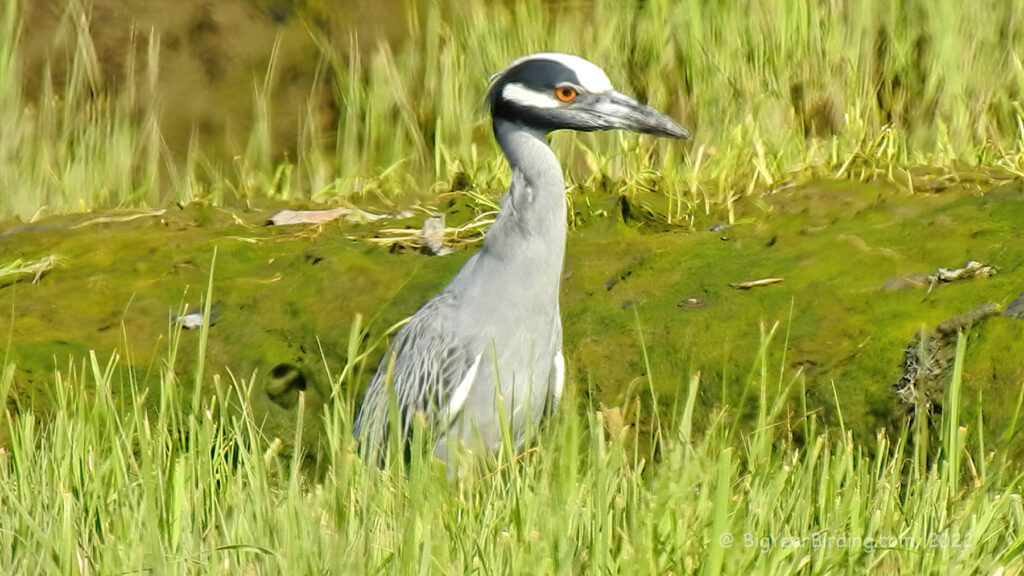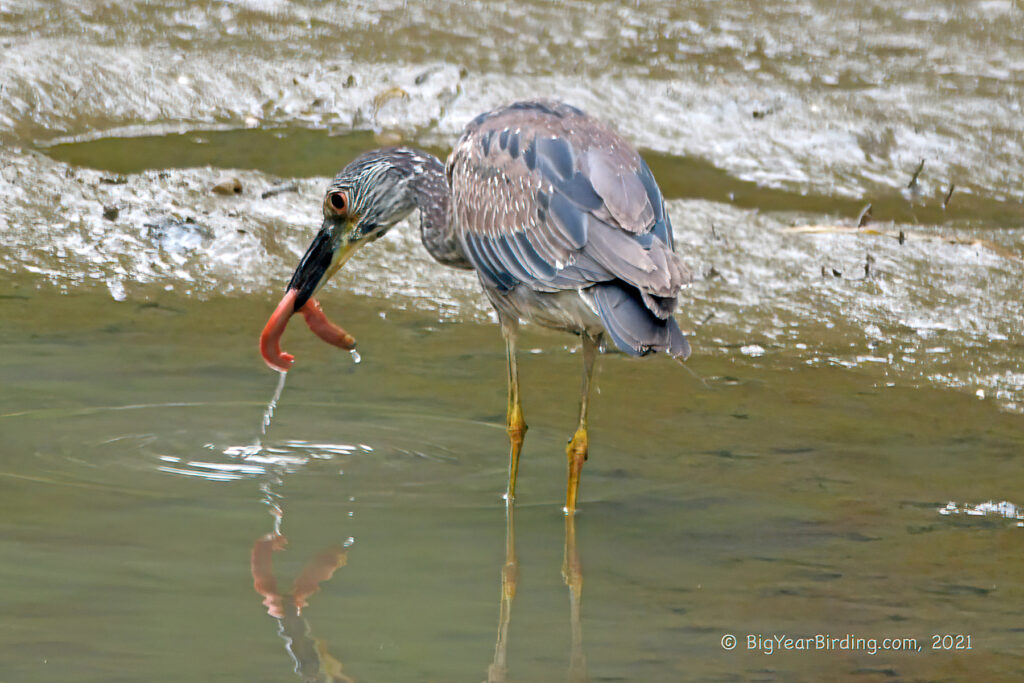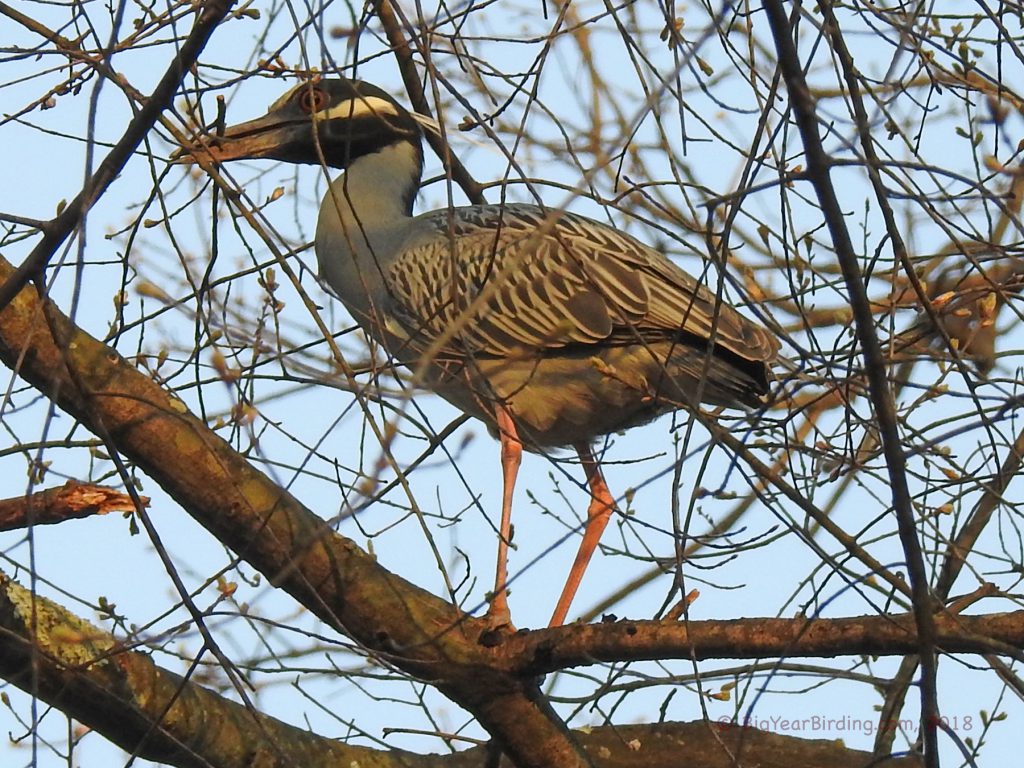
The Yellow-crowned Night-Heron (Nyctanassa violacea) is a medium-sized heron that is commonly found in wetlands and wooded swamps throughout much of the Americas. Adults typically measure between 23-28 inches (58-71 cm) in length, with a wingspan of around 44-46 inches (112-117 cm). They have a distinctive appearance, with a grayish-blue body, white underparts, and a black crown that is bordered by a bold white stripe. The eyes are bright red and the legs are yellow.

In terms of weight, Yellow-crowned Night-Herons are relatively heavy for their size, with adults typically weighing between 1.2-1.9 pounds (0.54-0.86 kg). Juveniles are slightly smaller and lighter, weighing in at around 1.1-1.4 pounds (0.5-0.63 kg). Overall, their body shape is stocky and compact, with a short neck and relatively short legs.
One of the key distinguishing features of the Yellow-crowned Night-Heron is its bold black and white crown pattern. This is most prominent in breeding adults, but can still be seen to some extent throughout the year. Other field marks include the bright red eyes, yellow legs, and grayish-blue body plumage. In flight, the wings are relatively broad and rounded, with a noticeable bend at the wrist. The tail is relatively short and squared-off.

Yellow-crowned Night-Herons are generally non-migratory, although some populations in the northern parts of their range may move southward during the winter months. In some areas, they may also move to more sheltered locations during periods of extreme weather or high tides. However, most individuals remain in their breeding territories year-round, where they feed primarily on a diet of fish, crustaceans, and insects. They are primarily active at dawn and dusk, and are often seen standing motionless in the water waiting for prey to swim by.

